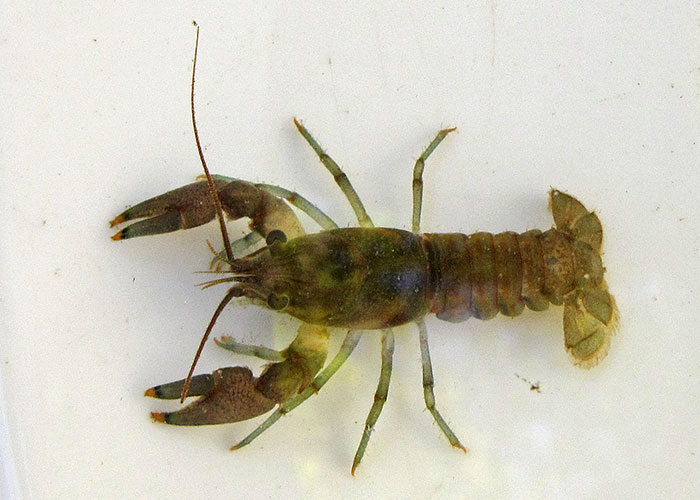Beware the attack of the crawfish invaders


There are times when aquatic invasive species seem like something from a horror movie. Species such as bighead and silver carp, invasive water garden plants and non-native crayfish, can self-clone and multiply, with astonishing speed and precision, leveraged to destroy native fish, wildlife and plants.
All too often, these damaging invasive species find passage into the state, through vendors who know what they’re importing is illegal. But, they also can hitch a ride with consumers who aren’t aware that what they’re buying is an invasive species.
The results can be plant-choked ponds, wiped-out native fish and wasted remains of once-diverse aquatic plant habitats. Any number of aquatic invasive species can have this effect. However, crayfish, whether from a well-intended crayfish boil or an aquarium pet setup, have been the focus of recent DNR work involving invasive species enforcement, under Chapter NR 40 (Wis. Adm. Code).
Wisconsin forbids keeping live non-native crayfish species, a rule meant to minimize the importation and possible release of invasive species. And yet, crayfish are among the most common invasive species in the pet industry.
In one case, DNR wardens were alerted of possible illegal crayfish sales at a Milwaukee pet store. An investigation discovered several companies from neighboring states, had supplied dozens of Wisconsin pet stores with about 950 invasive crayfish, during a two-year period.
The primary distributor and many of the pet stores had already been notified by the Wisconsin DNR about invasive species rules in the state, after an earlier illegal invasive species delivery. In all, the investigation resulted in 125 convictions against the primary distributor and another 22 against 10 other defendants.
Already widespread in the state, the invasive rusty crayfish may be harvested with a small game or fishing license, if none are allowed to escape.
Native to northern Mexico and the southern United States, red swamp crayfish often are shipped live, for use in the popular crayfish boil. The species is illegal in Wisconsin, because it can have damaging effects on the state’s native aquatic life.
Before the feast, they might be kept in a small pool, and sometimes escape and wander off. Or, leftover crayfish that aren’t boiled, might get dumped into a nearby waterbody.
To avoid potentially expensive or even disastrous environmental consequences tied to the invasive red swamp crayfish, it’s vital to use only native species for any crayfish boil in Wisconsin. Native crayfish species may be harvested and brought home alive.
Harvesting wild Wisconsin crayfish requires a small game or fishing license.
For more about invasive species in Wisconsin, visit dnr.wi.gov.


